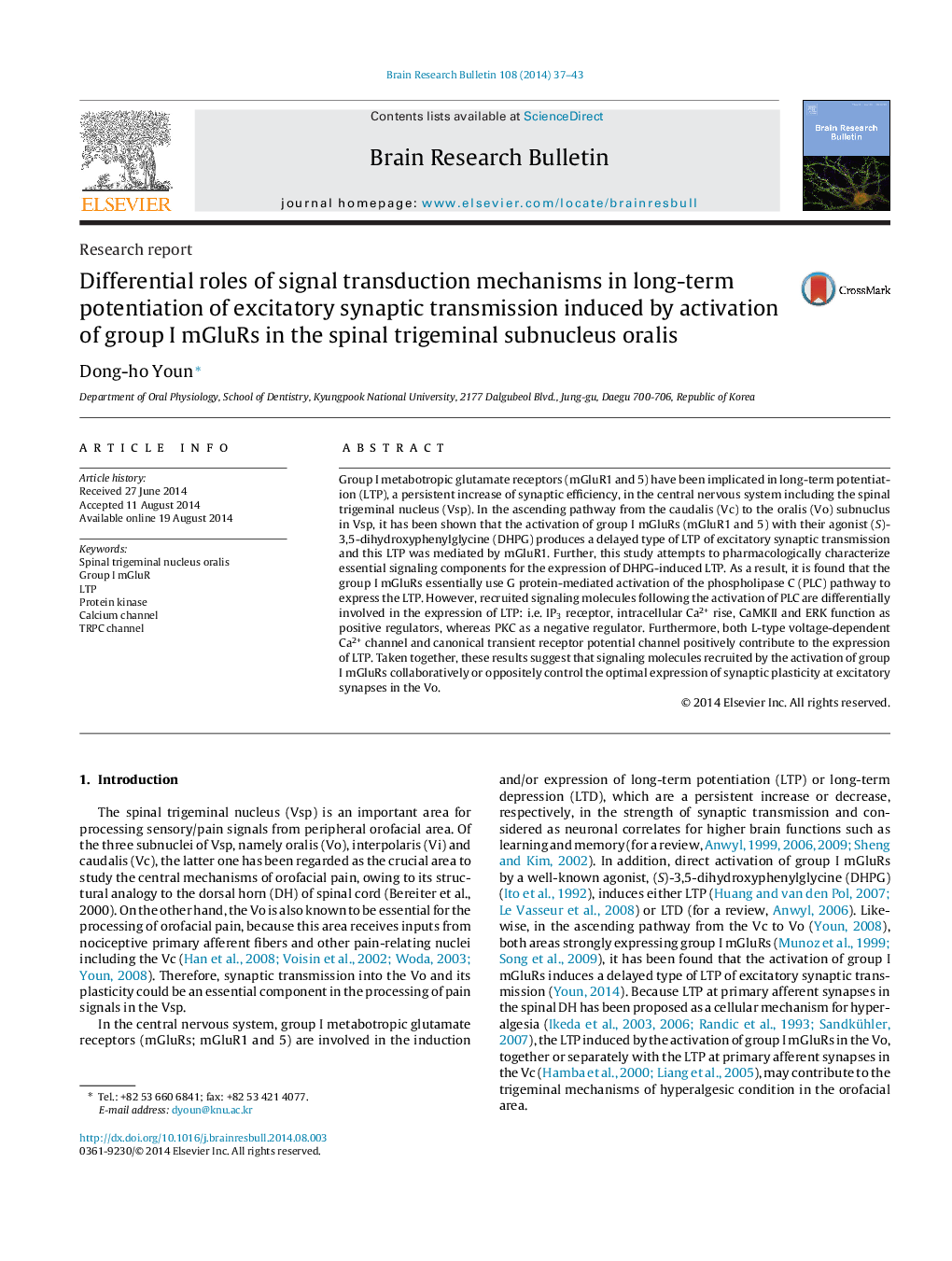| Article ID | Journal | Published Year | Pages | File Type |
|---|---|---|---|---|
| 6261760 | Brain Research Bulletin | 2014 | 7 Pages |
Group I metabotropic glutamate receptors (mGluR1 and 5) have been implicated in long-term potentiation (LTP), a persistent increase of synaptic efficiency, in the central nervous system including the spinal trigeminal nucleus (Vsp). In the ascending pathway from the caudalis (Vc) to the oralis (Vo) subnuclus in Vsp, it has been shown that the activation of group I mGluRs (mGluR1 and 5) with their agonist (S)-3,5-dihydroxyphenylglycine (DHPG) produces a delayed type of LTP of excitatory synaptic transmission and this LTP was mediated by mGluR1. Further, this study attempts to pharmacologically characterize essential signaling components for the expression of DHPG-induced LTP. As a result, it is found that the group I mGluRs essentially use G protein-mediated activation of the phospholipase C (PLC) pathway to express the LTP. However, recruited signaling molecules following the activation of PLC are differentially involved in the expression of LTP: i.e. IP3 receptor, intracellular Ca2+ rise, CaMKII and ERK function as positive regulators, whereas PKC as a negative regulator. Furthermore, both L-type voltage-dependent Ca2+ channel and canonical transient receptor potential channel positively contribute to the expression of LTP. Taken together, these results suggest that signaling molecules recruited by the activation of group I mGluRs collaboratively or oppositely control the optimal expression of synaptic plasticity at excitatory synapses in the Vo.
